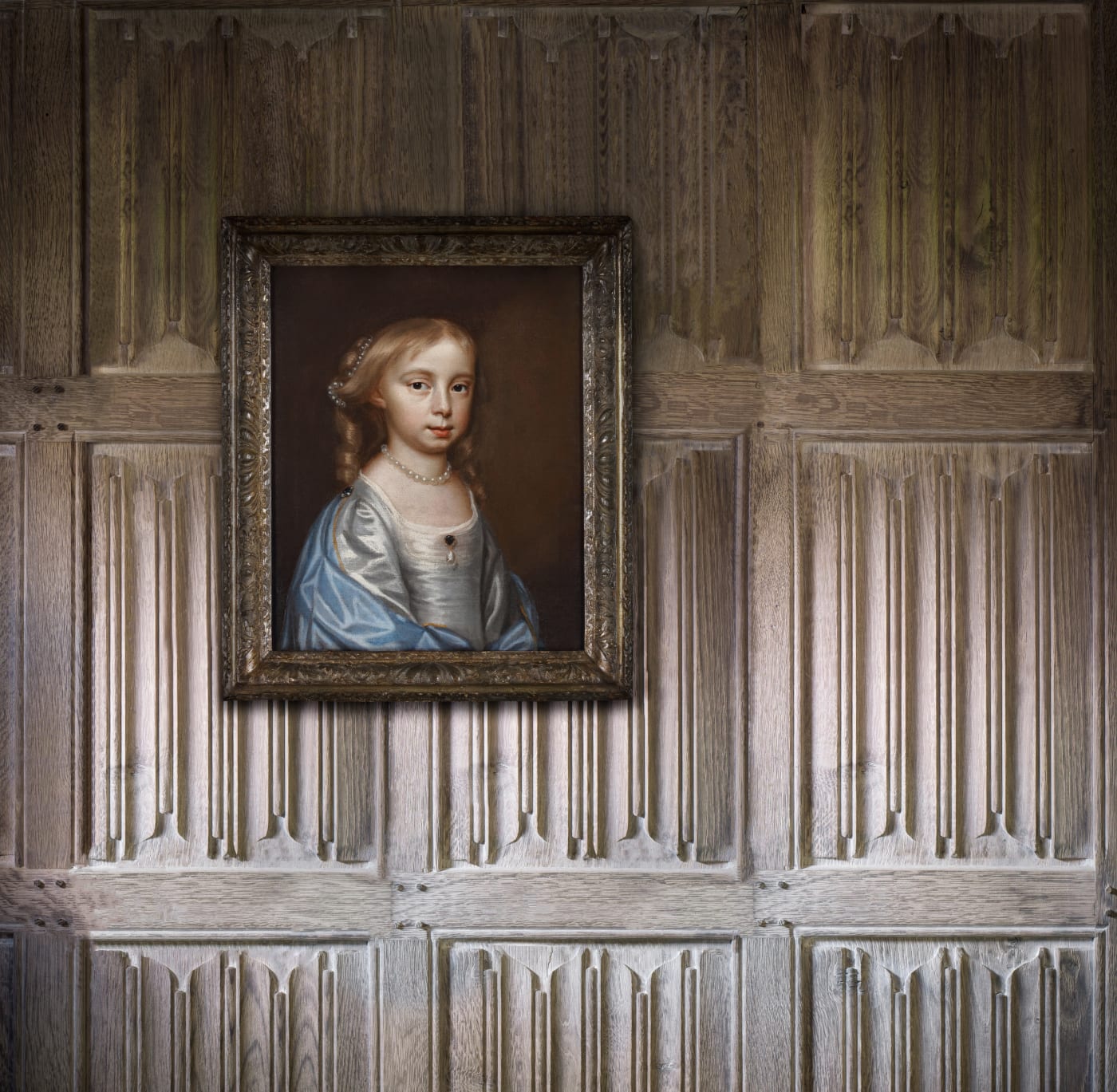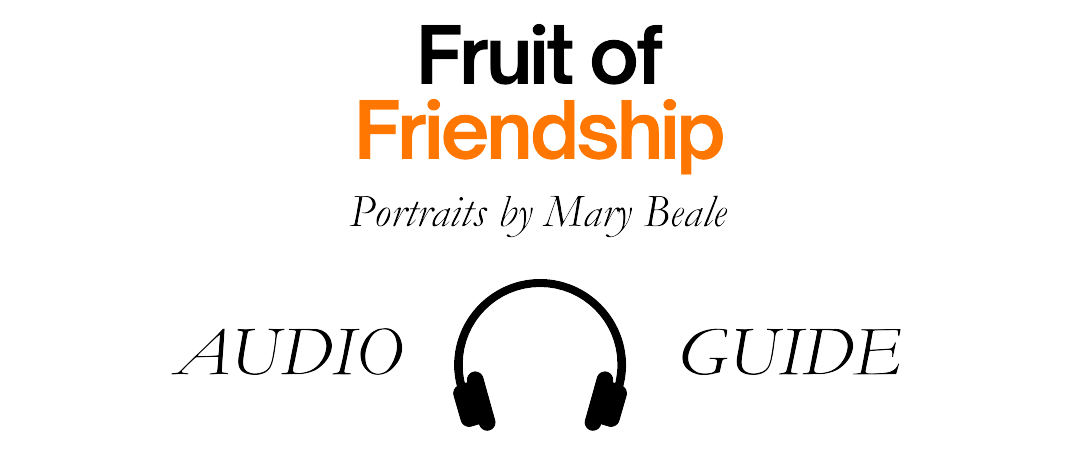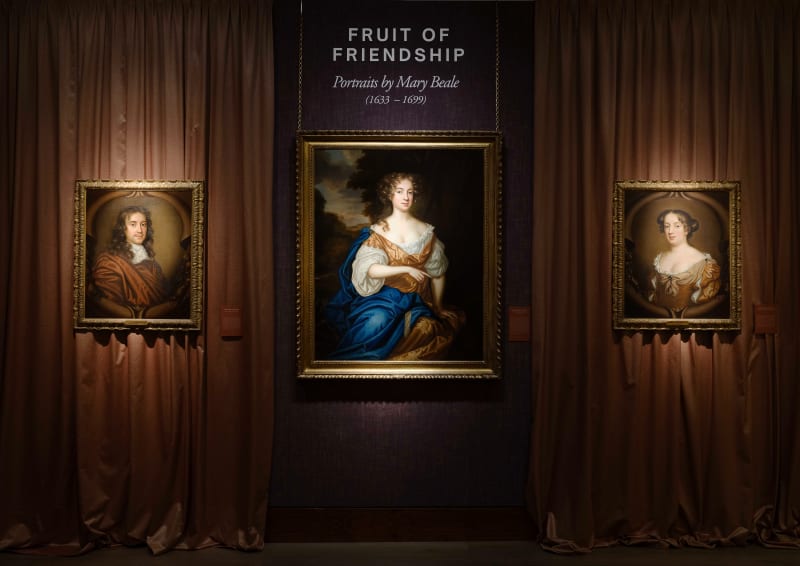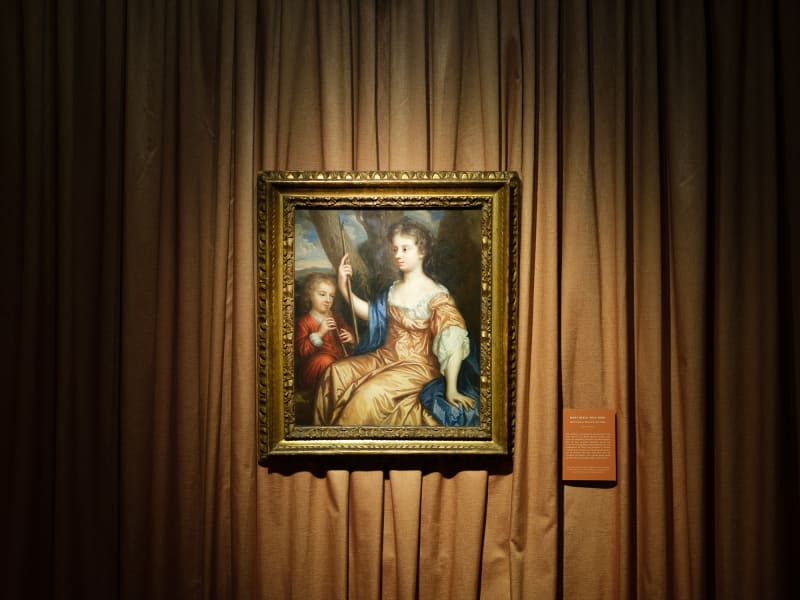Find out more about the highlights of our exhibition Fruit of Friendship: Portraits by Mary Beale with this audio guide narrated by Philip Mould, Lawrence Hendra and Ellie Smith.
Self-Portrait with Husband and Son, late 1650s
This is the earliest recorded self-portrait by Mary Beale and serves to express her extraordinary contribution to British art. Listen to Philip Mould explore how this work reflects the intricate balance she maintained between artist, wife and mother.
Charles Beale (1631-1705), late 1650s
This intimate portrait of Charles, donning an elaborate fur hat, is one of Mary Beale’s earliest surviving works. It records a seminal moment in the careers of both husband and wife: Beale as a respected painter of portraits and Charles as a clerk in the patents office. In this episode of the audio guide, Philip Mould discusses how the Beales were collaborators in art, life, and business.
Portrait of Anne Sotheby (née Robinson) (1657-1727), 1677
Assisted by her son Charles, this portrait offers an insight into the division of labour within Mary Beale’s studio. Beale herself took on the complex elements of the composition, such as the face and background landscape, and directed her son to paint the drapery. Listen to Lawrence Hendra explore how surviving records offer us an insight into this portrait as well as into Beale's business and the dynamics within her studio.
Mary Beale's Pall Mall Studio
Mary Beale’s studio was a model of efficiency and organisation. She often worked six days a week, spending long hours in her studio from morning until evening. Her output can be divided into three distinct categories: portraits done ‘for study and improvement’; ‘for friends and in return for kindness’; and ‘for profit’. Listen to Ellie Smith discuss how the Beale's run the studio, and how Mary's husband, Charles, meticulously documented all studio activities in a series of notebooks which make Mary the best-documented artist of the seventeenth century.
A Young Boy Seated in a Landscape, 1680s
The young sitter in this portrait was likely part of Mary Beale’s close circle of ecclesiastical patrons. He is presented with attributes of St John the Baptist, including a crook and a lamb, gesturing to a steepled church in the distant landscape. Listen to Lawrence Hendra analyse the Christian undertones of this portrait and the important role that religion played in Beale's life.







